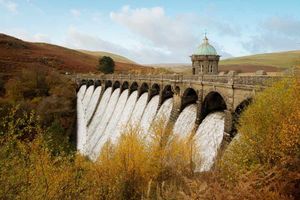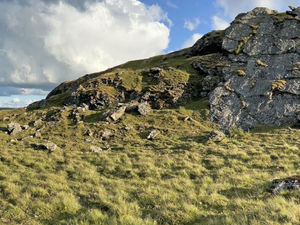Shropshire aqueduct pipe revamp work posing a 'huge undertaking' for water giant
For more than 100 years it has carried a vital water supply from Wales all the way through to Birmingham.

But with any giant structure it needs maintenance and since the start of the year Severn Trent Water has been busy upgrading the huge aqueduct.
The water company took over part of the Severn Valley Railway tracks at Bewdley as part of work to replace the 42 inch water pipes that travel from the The Elan Valley Aqueduct to the Midlands.
To carry out the necessary work, Severn Trent Water needs to close it down for significant periods of time. To do this, it has been pumping water from the River Severn to an additional treatment facility at Frankley.
The company used the railway to help transport new 42 inch pipes, but has now handed the track back.
Severn Trent programme manager Michael Lomas today explained the complexity of the scheme.
He said: "We are responsible for supplying water to our customers every day and for making sure it's there in the future.
"For these reasons we constantly check on the condition of our infrastructure and we think now is the right time to invest in some of our biggest supply pipes.
"The Elan Valley Aqueduct has been bringing water from Wales to Birmingham for more than 100 years.
"While it has served our customers well, our regular checks are showing it needs some modernisation and refurbishment.
"Part of the aqueduct runs across the River Severn at Bewdley and on towards Birmingham - and it is this part that needed replacing."
The Elan Valley has been in the public eye in recent days after it starred in an episode of Top Gear on Sunday.
A Land Rover, Series I vehicle winched itself up the face of the 190 feet high Claerwen Dam, with Richard Hammond at the wheel.
The river valley covers 70 square miles of lake and countryside and contains the Elan Valley Reservoirs and Elan Village, designed by architect Herbert Tudor Buckland as part of the same scheme.
But it was the aqueduct pipework in Bewdley, made up of four pipes encased in several feet of concrete that posed a "huge undertaking" for Mr Lomas and his team.
"To get at the pipes we used a specialist technique of hydro-demolition, where we used extremely high pressured water to break up the concrete," he said.
"Once the concrete was removed, we then replaced sections of three of the pipes, meaning that water supplies are now much more secure.
The pipes were difficult to get to and access could only be gained via a narrow single track road, so Severn Trent engineers decided to use the tracks of the SVR to move plant, equipment and materials to and from site, with a temporary office based in the station's grounds.
Mr Lomas said: "We're really grateful to the SVR team, most of whom are volunteers.
"They worked fantastically hard and showed real interest in the project.
"This made the job much easier for us and allowed us to get the work done in a much more efficient way.
"The work is now all complete and the tracks have been handed back to the SVR.
"Unfortunately, a number of difficulties meant we were late completing the work and so the SVR planned timetable was disrupted for three days.
"We'd like to apologise to anyone affected by this and we agreed with SVR that affected passengers should be compensated.
"Going forward, we've agreed to become one of the SVR sponsors, so we'll continue to support this fantastic part of our heritage."
Mr Lomas said the work formed part of wider plans to modernise and refurbish parts of the Elan Valley Aqueduct.
He said the aqueduct would be shut while work was carried out on certain parts of the structure.
An extra pipeline will be laid to take water from a new place on the River Severn and into Birmingham.
"This will give us a back-up supply of water to Birmingham during the refurbishment work on the aqueduct and will help in future in case of any emergency," he said.
"We're still in the planning stage at the moment and we're in the process of talking to anyone who could be affected by this work."
Further information about the project visit www.stwater.co.uk/brp






